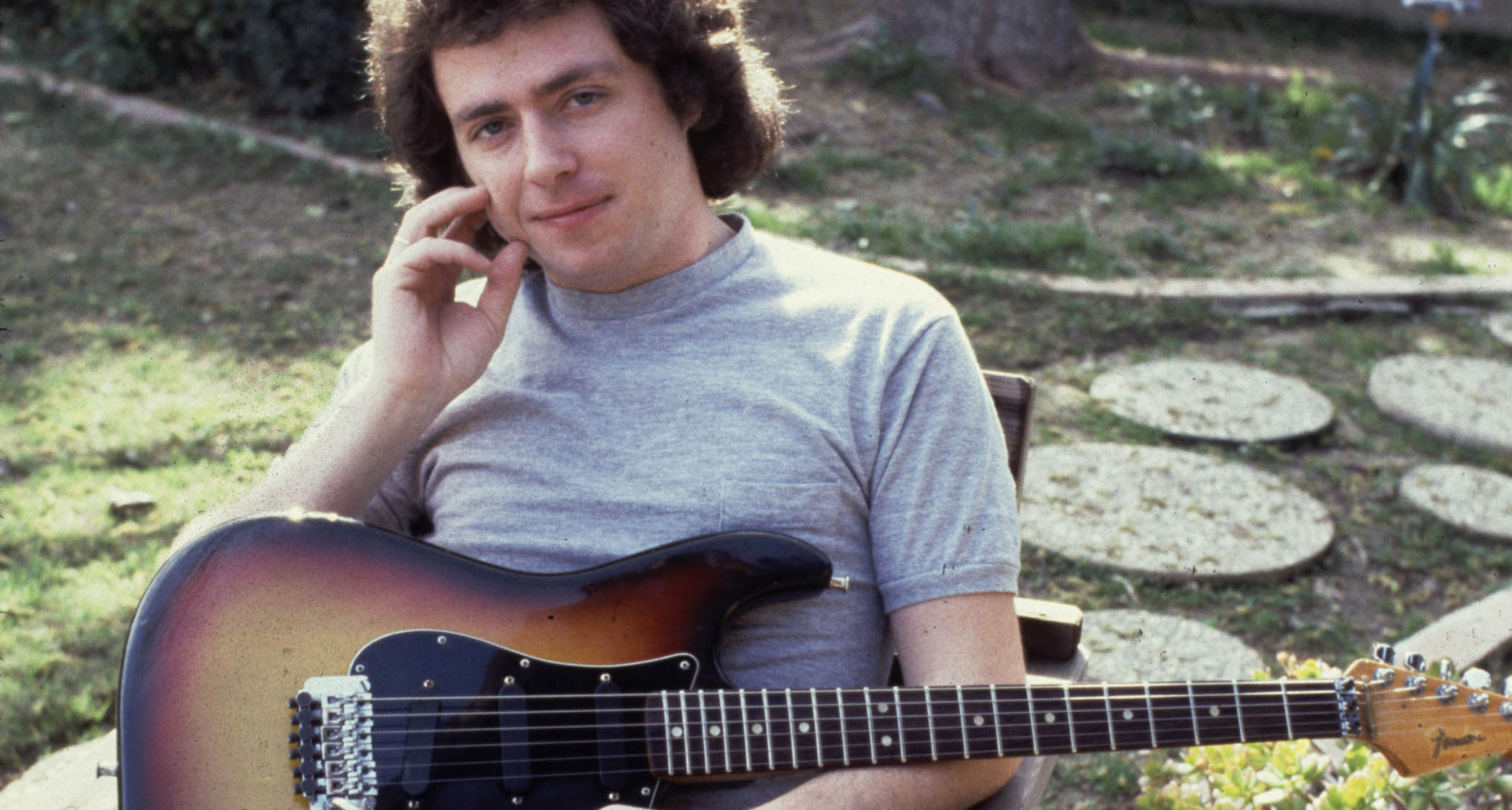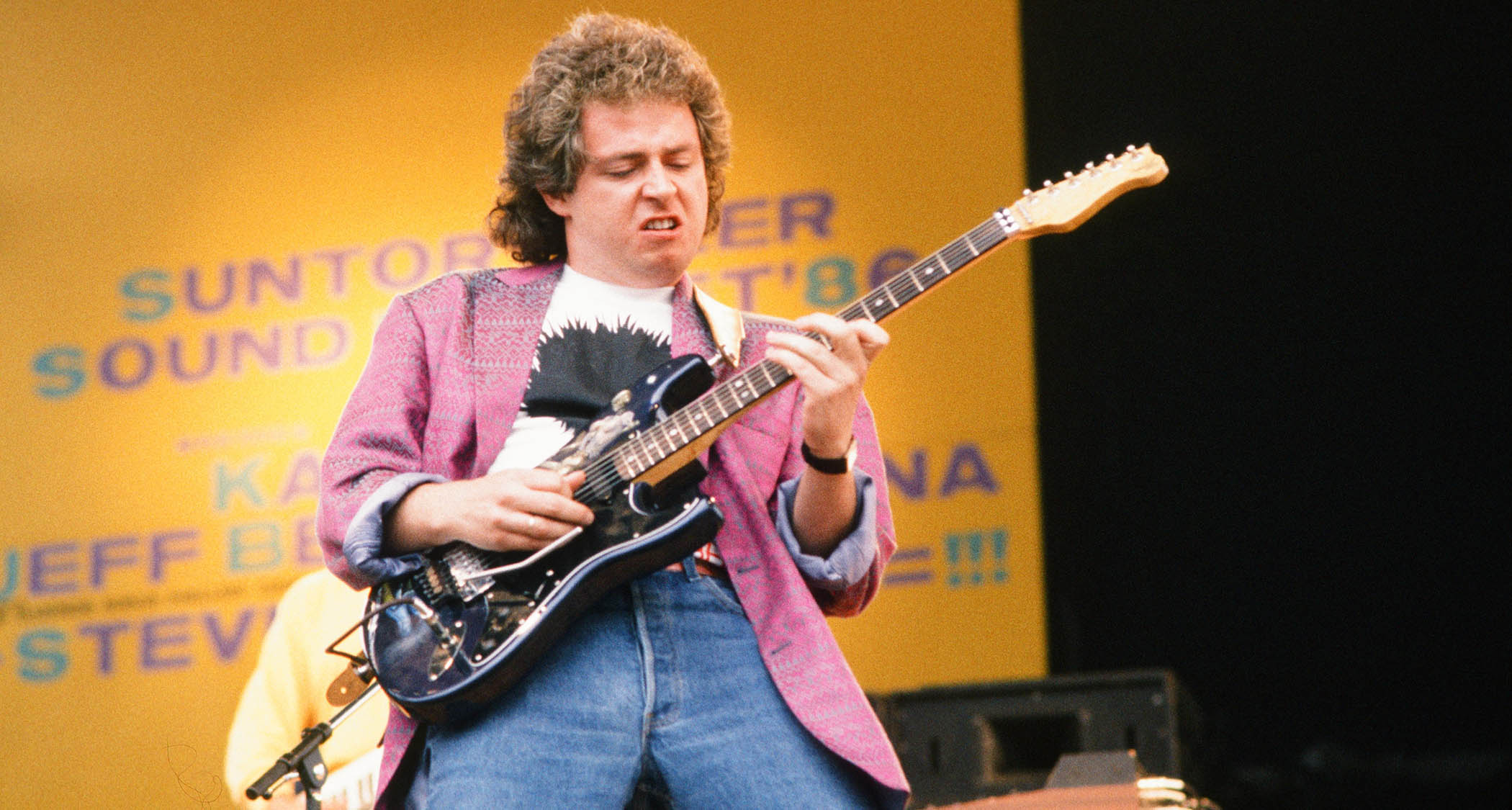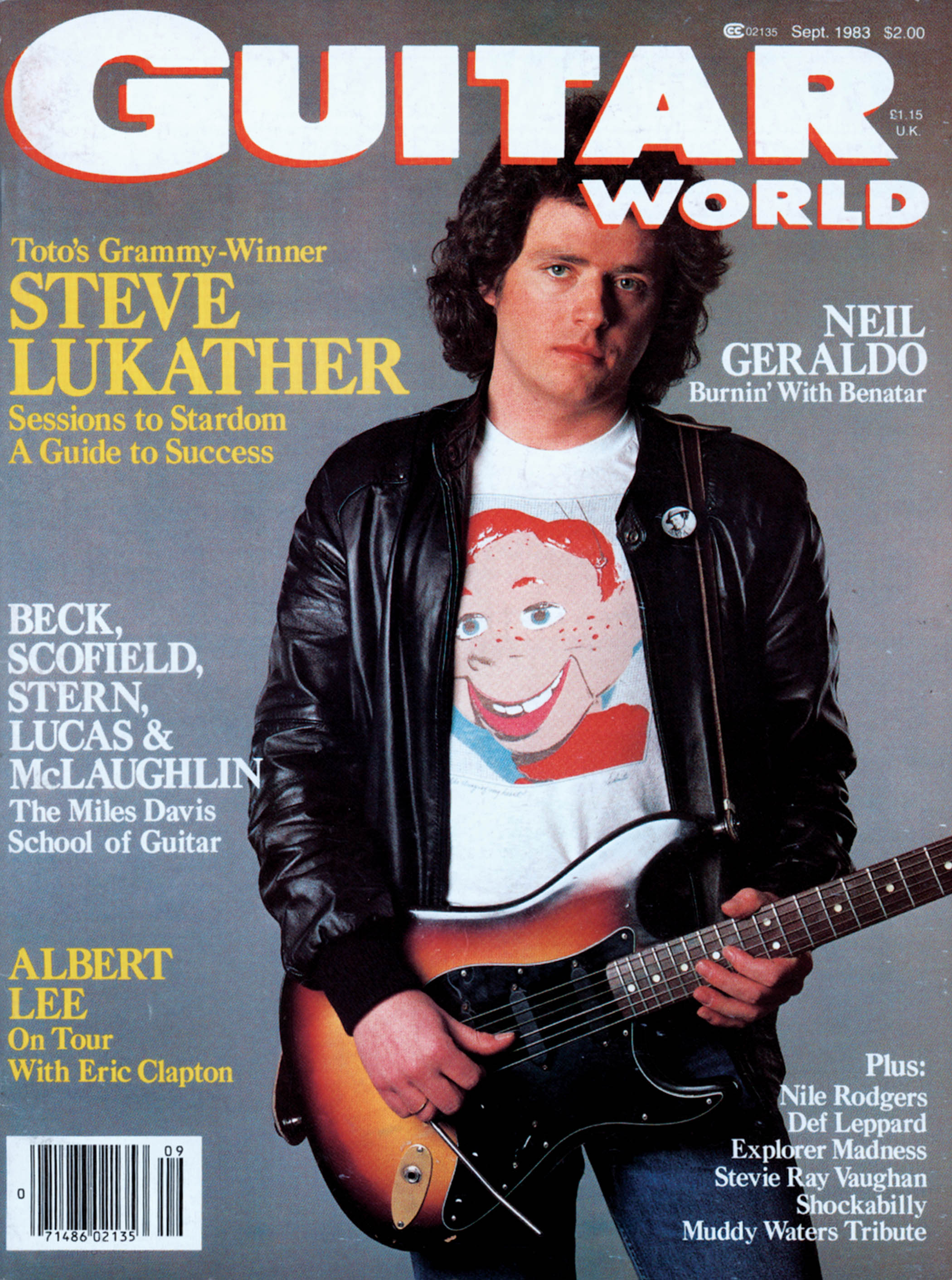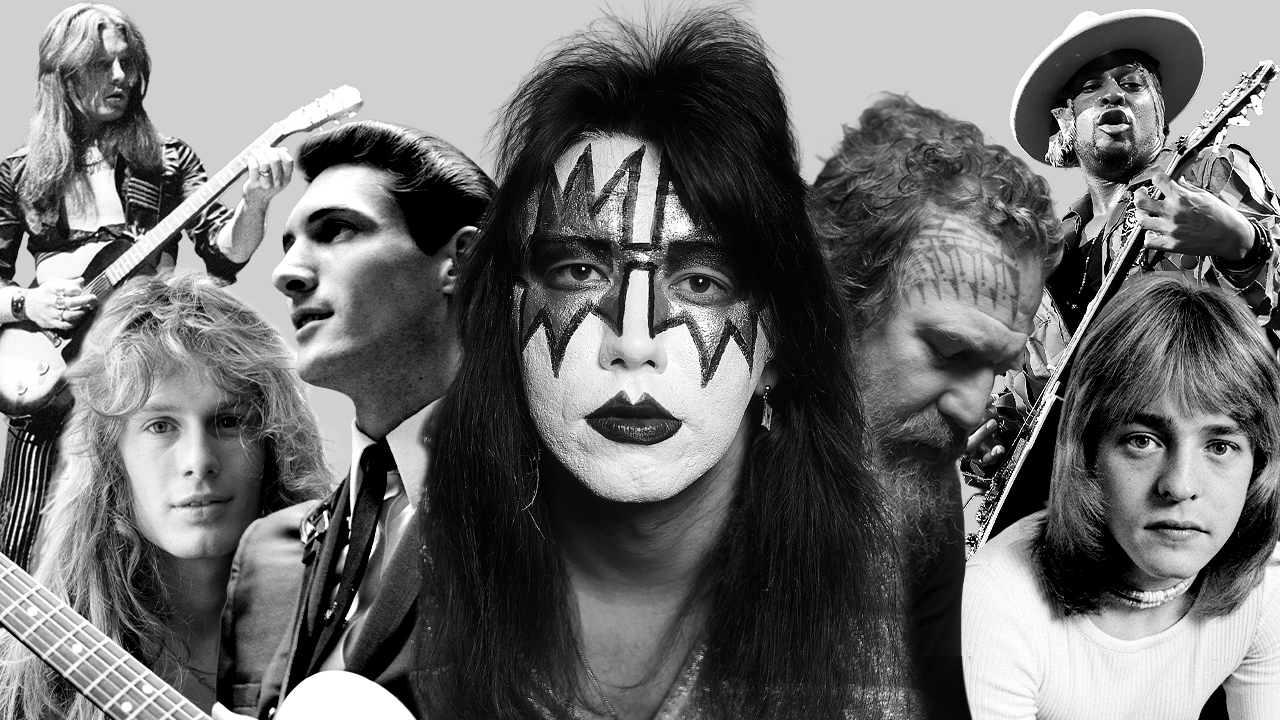“I played on about a billion records, and that guitar was on all of them”: Steve Lukather’s Robot Strat is one of the 1980s’ most-heard guitars, and started life as a vintage Fender – before it was modded beyond all recognition
When Lukather appeared on the Sep 1983 issue of GW, he was holding an EMG-loaded Strat that was about to undergo a similar transformation to Alex Murphy in RoboCop. Here is the story of a cult classic

We are now into the fourth generation of Steve Lukather’s Ernie Ball Music Man signature guitar line, with Luke IV defying cinematic convention by being the most thrilling instalment of the franchise. But once upon a time – let’s call it the ‘80s – the Toto guitarist and session ace was more associated with the Fender Stratocaster.
This was a more innocent era, when vintage electric guitars were not so sacrosanct (read: expensive) and so the bold Lukather, his career in the ascendancy, modded his, swapping in EMG active pickups, giving it the whole Valley Arts makeover that was en vogue at the time.
Just before this guitar turned into The Robot Strat, it and Lukather appeared on the September 1983 cover of Guitar World, and as part of our celebrations of the 70th anniversary of the Strat, we’ve been tracking down these cover stars and the players who played them. So this, you might say, is the story of The Robot Strat, how it started, and how it’s going.
Where and when did you buy this guitar?
“It would have been the late ’70s. I don’t remember where I got it – not Norm’s [Norman’s Rare Guitars]; it would have been a wannabe Norm’s down in Studio City. I guarantee the spot doesn’t exist anymore.”
Why did you choose it?
“I just wanted a Strat. [Laughs] It felt good, and I liked it. There wasn’t that much more to it beyond that. I had played Les Pauls and other guitars, and for whatever reason, I was searching for a Strat. I came upon that ’64, and that was it.”
All the latest guitar news, interviews, lessons, reviews, deals and more, direct to your inbox!
You ended up modifying it, right?
“I did. That guitar has a massive history and looks totally different [now] than it did on the cover. If you remember that funny-looking guitar I had back in the ’80s with the robot painted on it, that’s the same guitar as the one on the cover.
“I had put EMG pickups in and didn’t care that the guitar was vintage because I had no connection to it. I ended up bringing it to Valley Arts Guitars and said, ‘I’ll let you fuck with this guitar; it doesn’t mean much to me,’ and they made me a new neck, put a humbucking EMG and two single-coil EMGs in – and they painted the robot.”

What notable recordings did you use this guitar on?
“Literally, every record I did from mid 1984 to 1993. After I got it back from Valley Arts, the Robot Strat was my main guitar until I started using Music Man. If you look at any live show from the ’80s, you’ll probably see me playing it – especially in ’86 and ’87, when that guitar was everywhere. I played on about a billion records, and that guitar was on all of them.”
If you look at any live show from the ’80s, you’ll probably see me playing it – especially in ’86 and ’87, when that guitar was everywhere
Why did you choose this guitar for your GW cover shoot?
“It’s funny because, at that point, the ’64 Strat had not become the Robot Strat with the EMGs and the Valley Arts neck, so it wasn’t my main guitar, per se.
“So, the same day I was supposed to do the Guitar World shoot, I was working at the studio with [producer] Keith Olsen, and I had to run, so I grabbed the first one I saw. I was like, ‘Shit, I need a guitar for this shoot. This one will do. I had no allegiance to any guitar then, so I grabbed the Strat and ran to the shoot.’”

Do you still have this guitar?
“I still have it. I went through a phase where I was getting rid of shit, and I sold some vintage shit I could have made a lot more money on, but whatever; how many can you play at once? But I still have it; it’s in its case at home. It’s been a while since I broke it out and played it, but it felt pretty good the last time I did.
“I bet it needs an upgrade, so who knows when we’ll see it again. I only kept the guitars that meant something to me and have a history, so that fits the bill. I saw people were making bogus copies of it in Germany and Japan, though, so it must have meant something to other people, too.”
Andrew Daly is an iced-coffee-addicted, oddball Telecaster-playing, alfredo pasta-loving journalist from Long Island, NY, who, in addition to being a contributing writer for Guitar World, scribes for Bass Player, Guitar Player, Guitarist, and MusicRadar. Andrew has interviewed favorites like Ace Frehley, Johnny Marr, Vito Bratta, Bruce Kulick, Joe Perry, Brad Whitford, Tom Morello, Rich Robinson, and Paul Stanley, while his all-time favorite (rhythm player), Keith Richards, continues to elude him.

